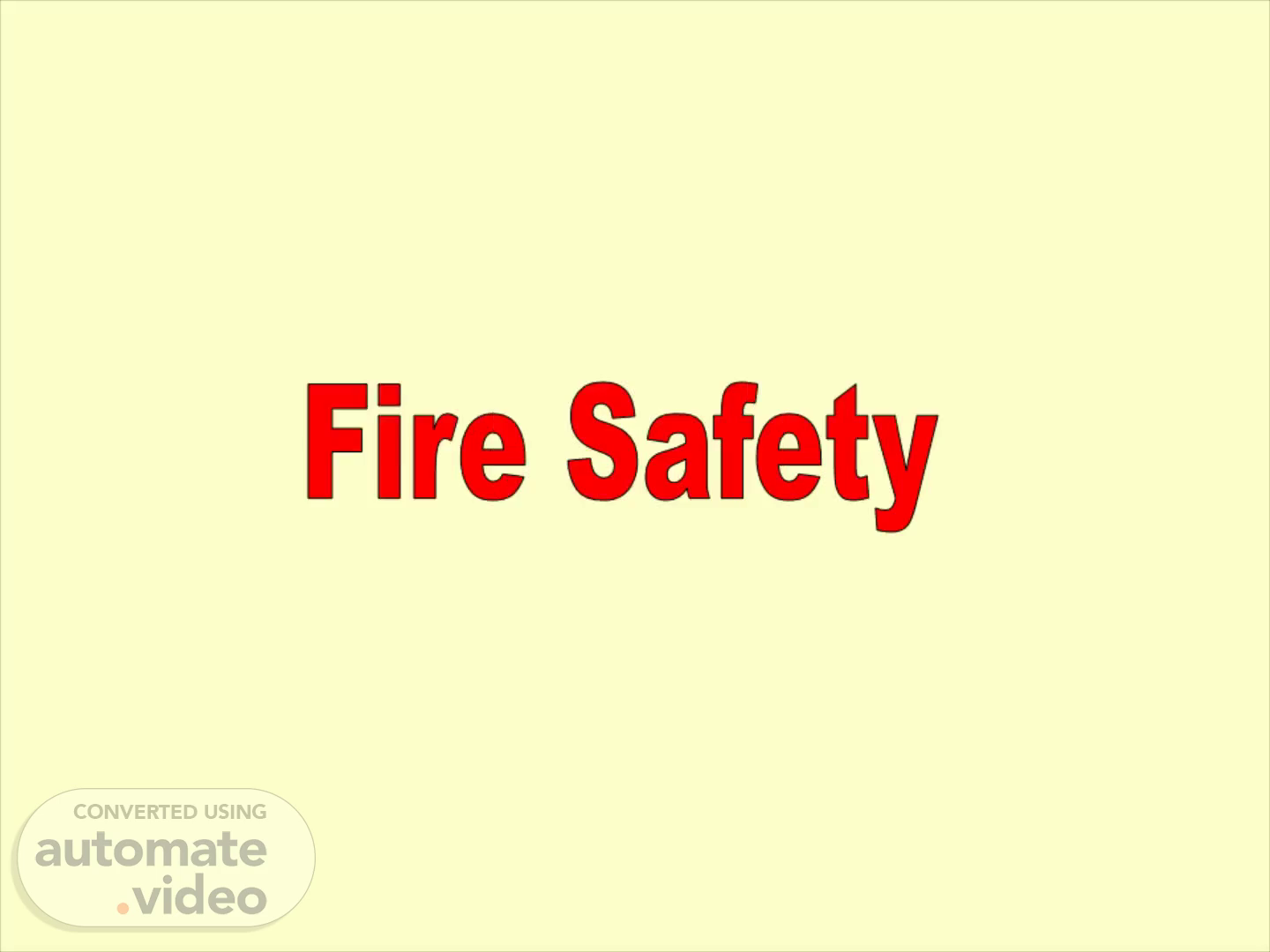Page 1 (0s)
Fire Safety.
Page 2 (5s)
Each of these three elements must be present at the same time to have a fire. A fire will burn until one or more of the elements is removed..
Page 3 (26s)
classa. Class A Ordinary combustibles or fibrous material, such as wood, paper, cloth, rubber, and some plastics..
Page 4 (50s)
a. Class Ordinary Combustibles:. Keep storage and working areas free of trash..
Page 5 (1m 1s)
b. Class Flammable liquids or gases:. Don’t refuel gasoline-powered equipment in a confined space, in the presence of an open flame, or while the equipment is hot..
Page 6 (1m 16s)
c. Class Electrical Equipment:. Never install a fuse rated higher than specified for the circuit..
Page 7 (1m 30s)
d. Class Flammable metals:.
Page 8 (1m 37s)
Check the location of fire alarms and know how they work..
Page 9 (2m 2s)
Pull the nearest fire alarm “pull station” while exiting the floor..
Page 10 (2m 22s)
Leave at once, taking direction from the emergency warden..
Page 11 (2m 35s)
Close doors behind you, however do NOT lock the door. Locking the door hinders the fire department’s search and rescue efforts..
Page 12 (2m 51s)
Before you open any door, feel the door with the back of your hand. If the door is warm to the touch, DO NOT attempt to open the door..
Page 13 (3m 24s)
Wait at a window and signal for help. Do not panic or jump!! WAIT!.
Page 14 (3m 42s)
Once you are out of the building, STAY OUT! Do not go back inside for any reason..
Page 15 (4m 3s)
In the event of a fire, your personal safety is your most important concern..
Page 16 (4m 11s)
Call the fire department.. Confirm that the fire is small and is not spreading..
Page 17 (4m 29s)
The fire is spreading beyond the immediate area in which it started, or if it is already a large fire..
Page 18 (4m 50s)
Many extinguishers available today can be used on different types of fires and will be labeled with more than one designator, e.g. A-B, B-C, or A-B-C..
Page 19 (5m 16s)
1. Most fires start small. Except for explosions, fires can usually be brought under control if they are attacked correctly with the right type and size of extinguisher within the first 2 minutes!.
Page 20 (5m 42s)
3. Before attempting to fight a small fire, be sure everyone is out of the area. Ensure someone has called the fire department. If the fire starts to spread or threatens your escape path, get out immediately!.
Page 21 (6m 3s)
5. PULL ... the pin. Some extinguishers require releasing a lock latch, pressing a puncture lever or other motion..
Page 22 (6m 22s)
7. SQUEEZE ... the handle. This releases the extinguishing agent..
Page 23 (6m 45s)
Remember!. Your Safety Comes First. When in doubt, leave the fire fighting to the professionals.
